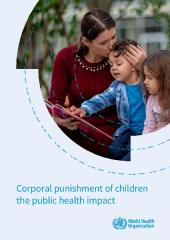This technical report describes the prevalence, risk factors for, and consequences of child corporal punishment, which it defines as “any punishment in which physical force is used and intended to cause some degree of pain or discomfort, however light”. Globally, an estimated 1.2 billion children aged 0-18 years are subjected to corporal punishment at home each year, and between a quarter and half of children experience corporal punishment in schools. The consequences of child corporal punishment can last a lifetime and undermine physical and mental health, education, and social and occupational functioning. The report describes underlying risk factors at the individual, family, community and societal levels. It concludes that there is now overwhelming scientific evidence that child corporal punishment carries multiple risks of harm and has no benefits for children, parents, or societies. Efforts to enact and enforce laws banning corporal punishment are necessary but not sufficient, and should be complemented by efforts to support parents and teachers in the use of positive, non-violent approaches to discipline.
